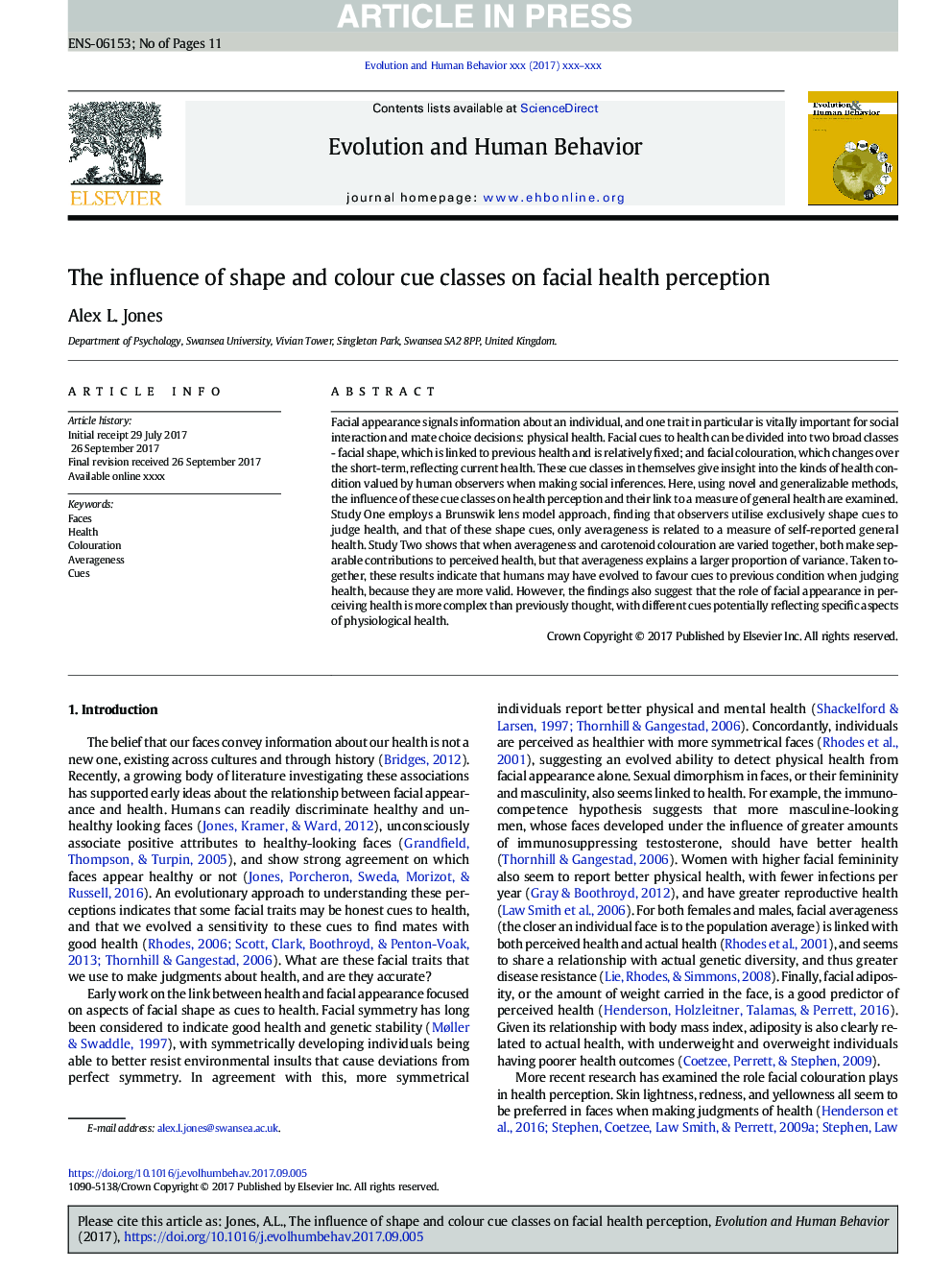| Article ID | Journal | Published Year | Pages | File Type |
|---|---|---|---|---|
| 7316351 | Evolution and Human Behavior | 2018 | 11 Pages |
Abstract
Facial appearance signals information about an individual, and one trait in particular is vitally important for social interaction and mate choice decisions: physical health. Facial cues to health can be divided into two broad classes - facial shape, which is linked to previous health and is relatively fixed; and facial colouration, which changes over the short-term, reflecting current health. These cue classes in themselves give insight into the kinds of health condition valued by human observers when making social inferences. Here, using novel and generalizable methods, the influence of these cue classes on health perception and their link to a measure of general health are examined. Study One employs a Brunswik lens model approach, finding that observers utilise exclusively shape cues to judge health, and that of these shape cues, only averageness is related to a measure of self-reported general health. Study Two shows that when averageness and carotenoid colouration are varied together, both make separable contributions to perceived health, but that averageness explains a larger proportion of variance. Taken together, these results indicate that humans may have evolved to favour cues to previous condition when judging health, because they are more valid. However, the findings also suggest that the role of facial appearance in perceiving health is more complex than previously thought, with different cues potentially reflecting specific aspects of physiological health.
Related Topics
Life Sciences
Agricultural and Biological Sciences
Ecology, Evolution, Behavior and Systematics
Authors
Alex L. Jones,
